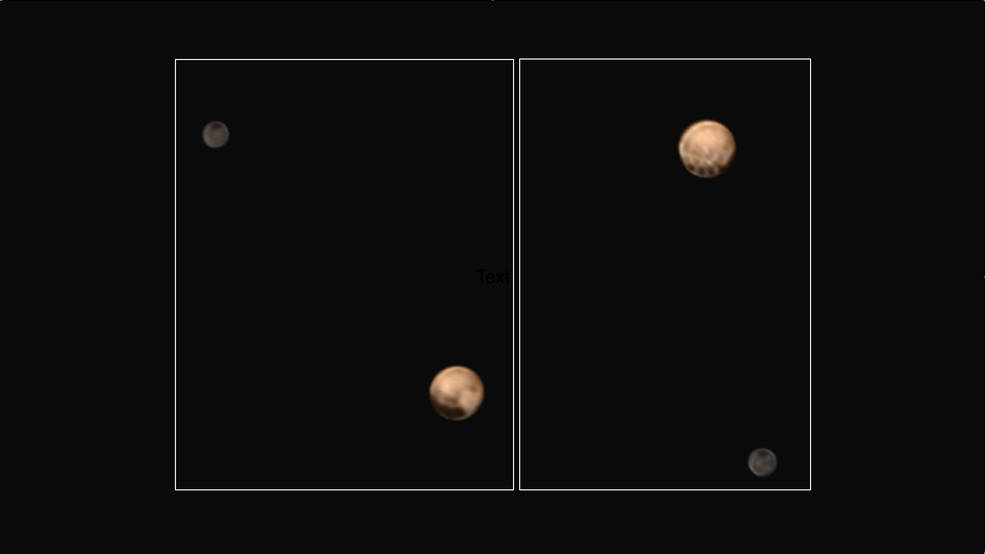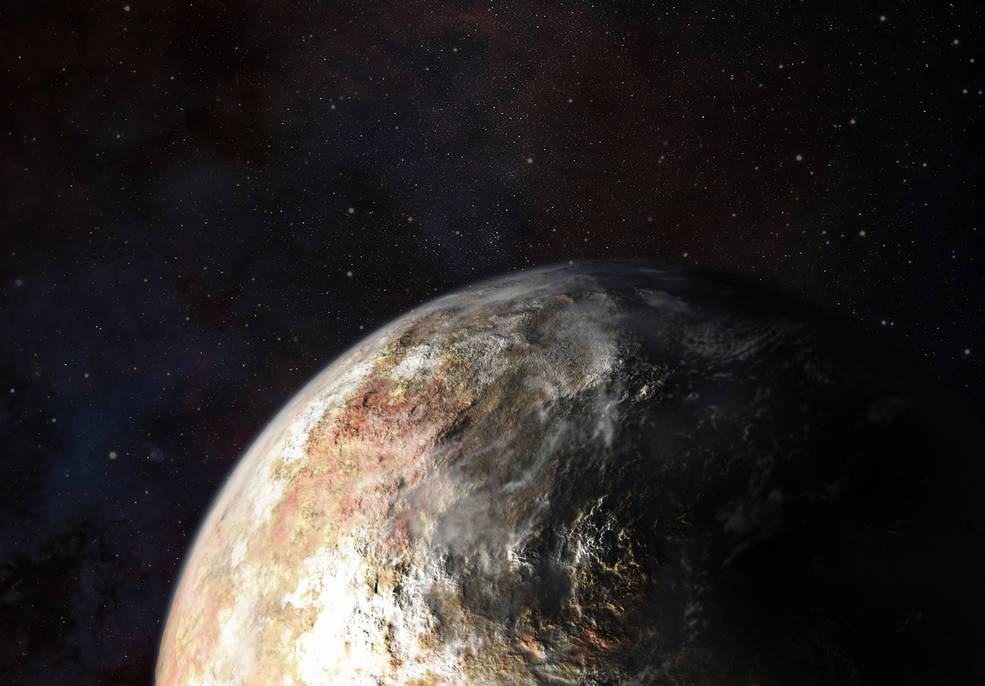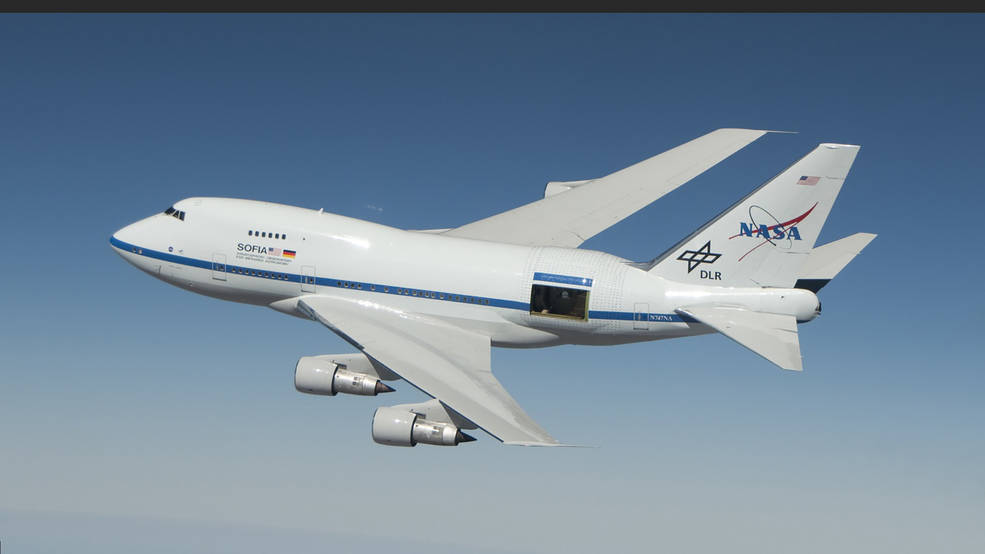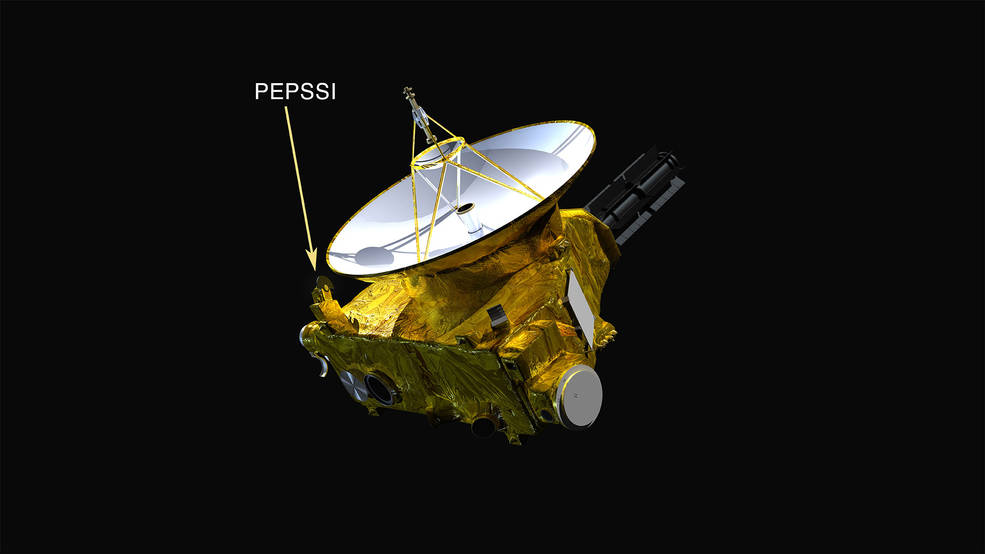Color Images of Pluto Show Two Distinct Faces and a Series of Intriguing Spots Along The Equator
by Sophia Nasr, @Pharaoness
The newest color images taken from NASA's New Horizons spacecraft reveal two distinct faces of Pluto. One face exhibits a mysterious array of evenly spaced dark spots, each about 480 km (300 miles) across.



We have never seen these types of spots on other planetary bodies with regards to their consistency in spacing and size. "It's a real puzzle—we don't know what the spots are, and we can't wait to find out," said New Horizons principal investigator Alan Stern of the Southwest Research Institute, Boulder. "Also puzzling is the longstanding and dramatic difference in the colors and appearance of Pluto compared to its darker and grayer moon Charon." When New Horizons reaches closest approach on Juy 14, it may be able to shed light on what the spots are.
The color images were composed of black-and-white images of Pluto and Charon taken by the Long Range Reconnaissance Imager (LORRI) combined with lower resolution color images taken by the Ralph instrument. The images are nearly true color, what you could expect to see if you caught a ride with the New Horizons spacecraft (what a ride that would be!). In the image, the lower portion of Pluto is actually where its equatorial line is.
Other Mision News...
Search For Winds
New Horizons will be able to detect clouds on Pluto and will use the Ralph instrument and the LORRI imager during close approach and departure to look for them. "We're looking for clouds in our images using a number of techniques," said science team postdoc Kelsi Singer of the Southwest Research Institute, "If we find clouds, their presence will allow us to track the speeds and directions of Pluto's winds."

SOFIA Occultation
Using a 2.5 meter telescope aboard NASA's SOFIA airborne observatory, planetary scientists revealed that Pluto's atmosphere is not freezing away as the dwarf planet recedes into aphelion (furthest distance from the sun), as scientists once feared. This is actually why New Horizons was sent to Pluto as quickly as it was—scientists wanted to catch its atmosphere before it disappeared. "Pluto's atmosphere is alive and well, and has not frozen out on the surface," according to New Horizons deputy project scientist Leslie Young, Southwest Research Institute, Boulder. "We're delighted," Young added.
"The SOFIA observations will also be essential for linking ground-based studies to the results from the New Horizons Pluto encounter for decades to come", said Cathy Olkin, Southwest Research Institute, Boulder, co-investigator on NASA's New Horizons mission.

PEPSSI
The Pluto Energetic Particle Spectrometer Science Investigation (PEPSSI) instrument aboard New Horizons has been sending back data on a daily basis, constantly examining the space around Pluto. Designed to detect ions that escape Pluto's atmosphere, PEPSSI will carry out an in-depth study of Pluto's exosphere. The ions released from Pluto's exosphere get carried away in the solar winds, as the solar winds contain the magnetic field of the Sun, and since ions are particles with a charge, they can interact with the magnetic field carried with the solar winds. These solar winds then slow down as a result of conservation of momentum, a rule that states that momentum can neither be created nor destroyed in a system. PEPSSI will take data that will tell scientists how fast Pluto's exosphere escapes the dwarf planet.

The Wait: New Horizons At Pluto
New Horizons is now about 14 million km (9 million miles) away from the Pluto system and less than two weeks away from closest approach. You can celebrate its arrival by hosting a Plutopalooza on July 14th! To help build the excitement for closest approach, the mission team produced a video about the flyby called 'The Wait'.
“There’s only one Pluto flyby planned in all of history, and it's happening in two short weeks. We want to get the word out, so please share this movie with all your friends, family, and followers. Talk about the mission and what it means for the human race,"" says Stern.
For the original press release, click here.
 Sophia Nasr is an astrophysics student at York University. Actively involved in the astronomical community at York U, she is the President of the Astronomy Club at York University and a member of the team at the York University Observatory. She also is involved in university projects, and holds a position in research on dark matter at York U. Holding scientific outreach dear, Sophia is actively involved in social media outlets such as Facebook, Twitter, and Google Plus, where she shares with the world her passion for the universe and how it works.
Sophia Nasr is an astrophysics student at York University. Actively involved in the astronomical community at York U, she is the President of the Astronomy Club at York University and a member of the team at the York University Observatory. She also is involved in university projects, and holds a position in research on dark matter at York U. Holding scientific outreach dear, Sophia is actively involved in social media outlets such as Facebook, Twitter, and Google Plus, where she shares with the world her passion for the universe and how it works.







